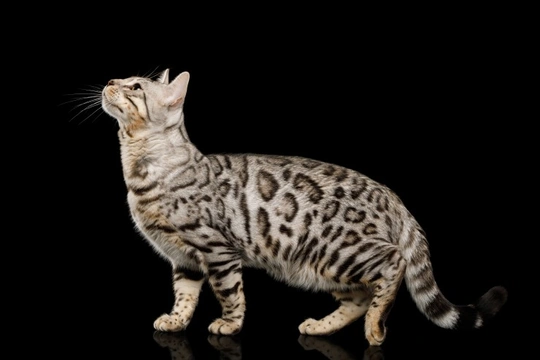
Cats and the primordial pouch
If you own an adult cat or see a lot of cats out and about, you may have noticed that many of them have a slight paunch in their lower belly that hangs a little lower towards their hind legs, and that may move slightly from side to side as they walk. However, this doesn’t necessarily indicate that your cat is getting a little too round at the edges or has a pot belly, and in fact, all adult cats have this physical feature, although it is more obvious in some than others.
This area of the body is called the “primordial pouch,” and it can be seen in all manner of wild cats too, as well as domestic cats of all breeds! The primordial pouch can also be one of the first areas of your cat’s body that stores fat if they become overweight, however, and being able to identify excess weight versus the pouch itself is important to keep your cat at a healthy weight.
If you have never heard of the primordial pouch before, or realise that you have seen it on several cats without realising what it was, you’re probably not alone – not many cat owners are aware of the role of this part of the body either! In this article, we will talk about the primordial pouch in cats in more detail, and examine what it does and why cats have it. Read on to learn more.
Where to find the primordial pouch
If you are looking at your cat side-on when they are standing up or walking around, you will be able to see the primordial pouch just in front of their hind legs, hanging an inch or two lower than the rest of the stomach. If your cat runs, you may also see it swinging from side to side. In young and very lithe cats, the primordial pouch will not be particularly low or obvious, but you will still be able to feel it (if your cat will tolerate having their tummy touched!) As slightly softer, looser skin beginning where their stomach starts to slope upwards towards their hindquarters.
Do all cats have it?
All cats have a primordial pouch, but it is more obvious in some breeds than others – like the Bengal, which has the primordial pouch mentioned as a feature of the breed in their breed standard.
The primordial pouch is not, as many cat owners think, simply a little excess belly fat, or leftover skin that doesn’t spring back after weight loss – nor does it happen as a result of spaying or neutering. However, the primordial pouch will often be more prominent in a cat that is overweight as the pouch can serve as a fat reserve, and it is also more prominent in cats as they pass from young adulthood to maturity, as their muscle tone slackens off a little.
What does it do?
This innocuous pouch of skin that is so often overlooked that many cat owners don’t even realise that the pouch has a proper name actually fulfils a variety of important roles for felines, particularly wild cats that hunt for food and that may be faced with larger predators. These same functions remain intact in domestic cats too, which makes sense given that our domestic cats have wild ancestors!
One of the functions of the primordial pouch is to make it easier for your cat to defend themselves and avoid injury when fighting with another cat – cats cling onto each other and use their hind legs to kick and damage the stomach area of their opponent, and this loose skin helps to protect the internal organs, by making it harder for the other cat’s claws to score the skin and cause damage due to its flexibility.
It also helps to protect cats against attack by larger predators too, as the loose, flexible skin of the stomach is harder to grab onto than muscle tissue, which again, helps to defend the internal organs during an attack.
The primordial pouch also helps to store fat reserves during leaner times, which helps wild cats to survive cold winters when food is scarce. However, in domestic cats, the primordial pouch may also hold stubborn weight that can be hard to shift if your cat starts piling on the pounds! Because cats in the wild have to feed opportunistically – which for some large cats like the lion, might mean gorging on a large meal and then going hungry for a couple of days – the primordial pouch also expands to provide a little extra food storage to take the pressure off a full stomach, enabling cats to hold onto a food resource to see them through later hunger.
Additionally, cats are very athletic and flexible animals that use their whole bodies to run and manoeuvre, and the added stretch provided by the primordial pouch allows cats to extend fully at a running gait. It also helps to speed up the recovery time for cats after they are spayed, because jumping and fast movements do not cause excessive pressure on the surgical scar, due to the proliferation of supple, flexible skin in this area.



